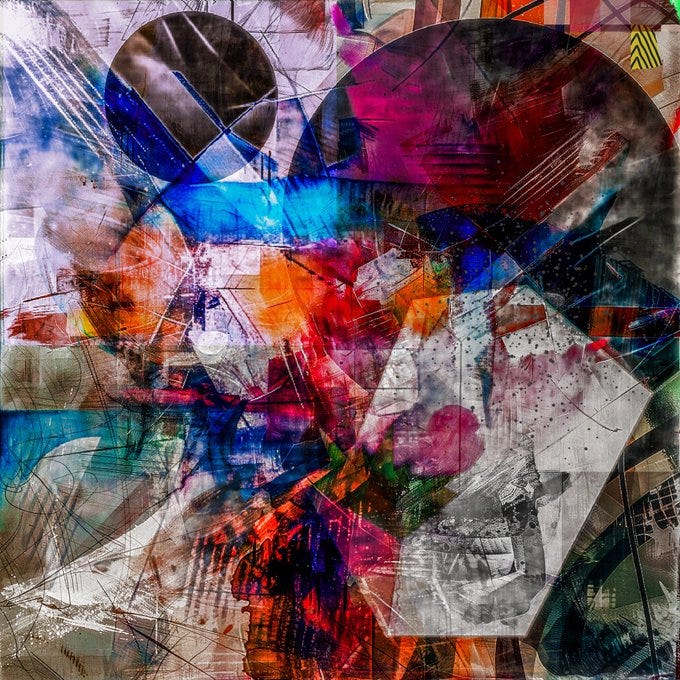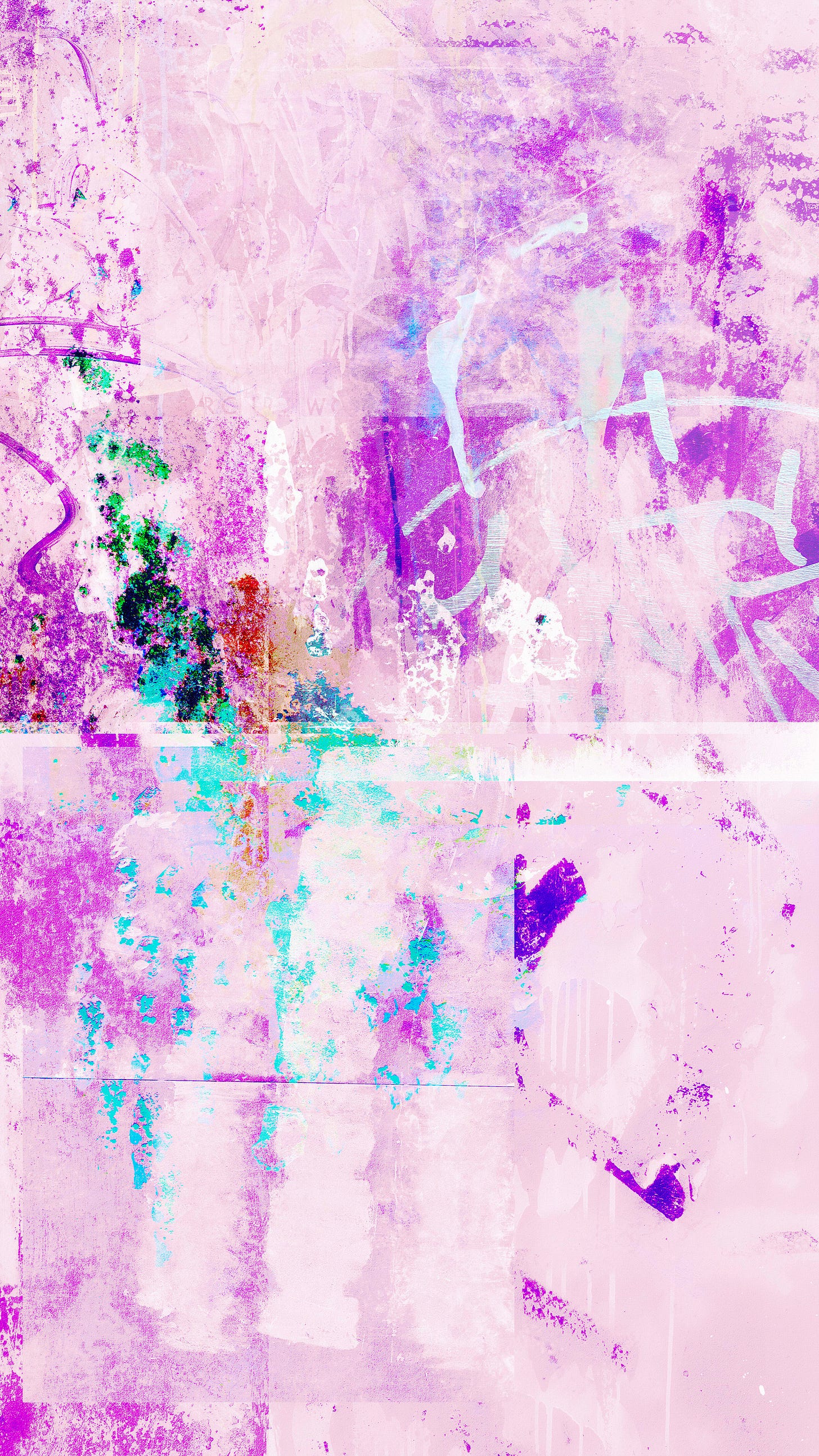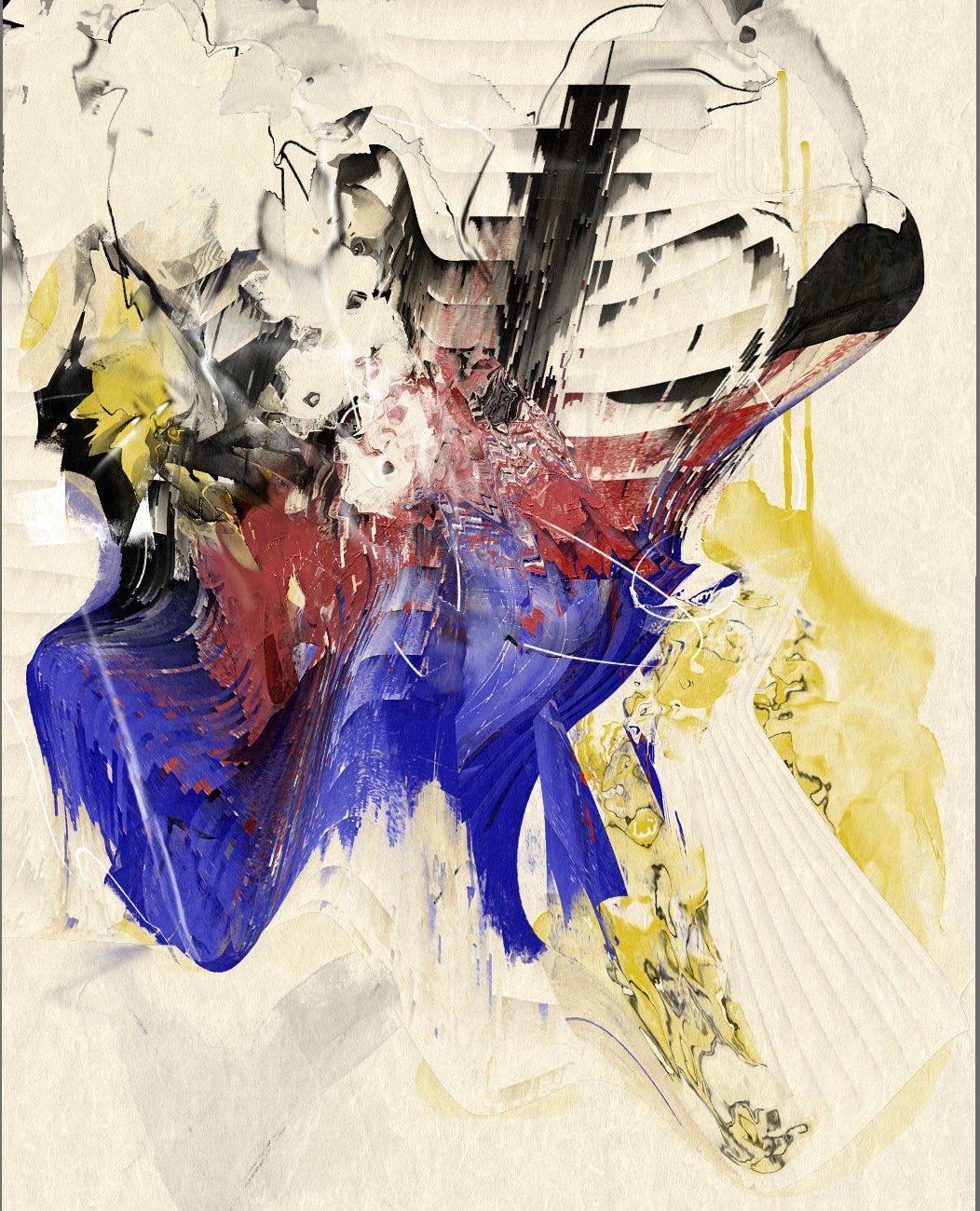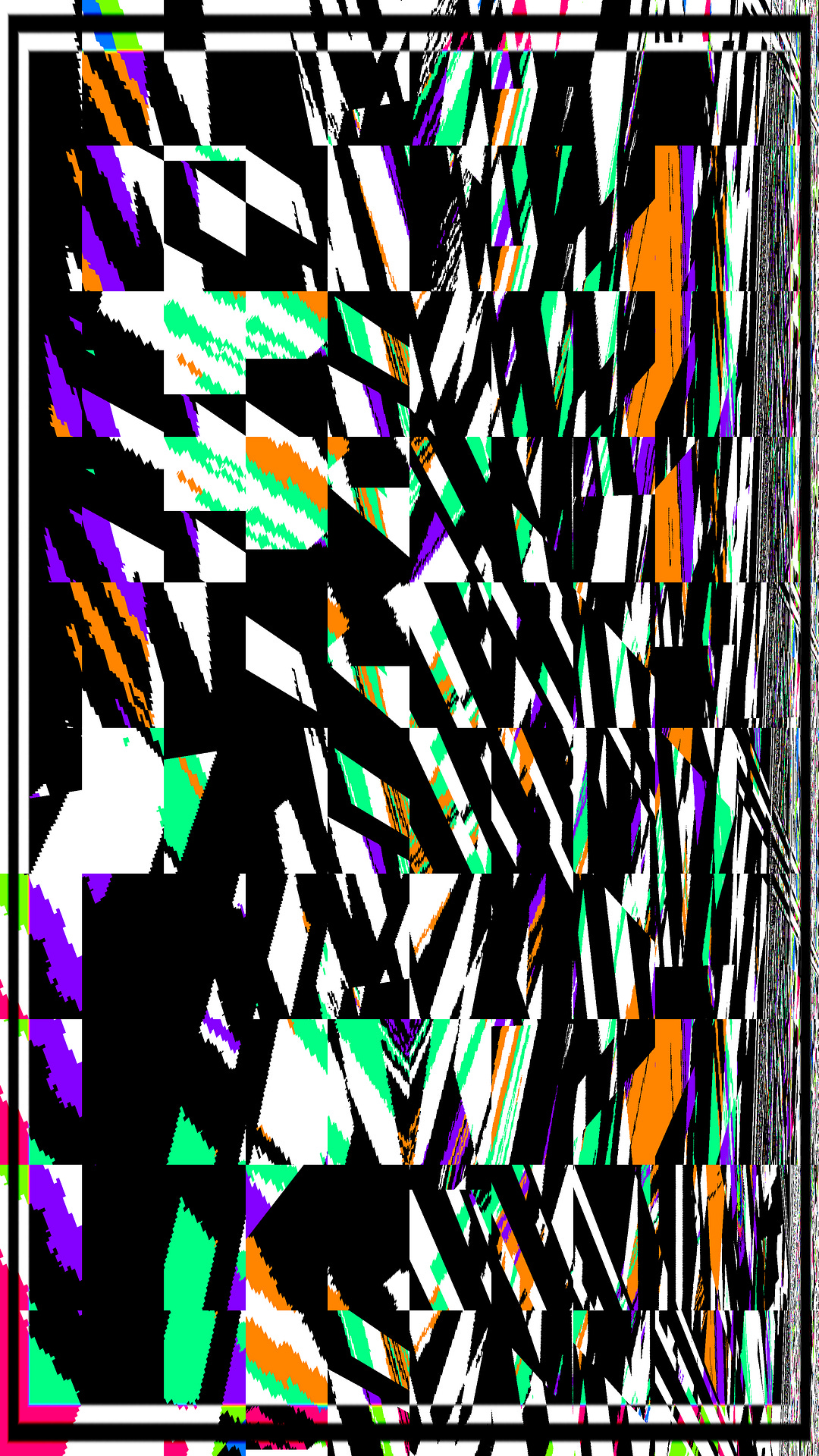A World Within a Phrase II - Results
Check out the submissions for this month's art and music challenge.
Hey friends,
I can’t wait for you to see the results of the second art and music challenge! Each one of these works is high quality and super unique, exemplifying the signature voice of each artist while pushing them in slightly different directions.
This month’s prompt was “Every day, once a day, give yourself a present. Don’t plan it. Don’t wait for it. Just let it happen.” If you missed the challenge post, see it here:
You’ll notice that even though many of the same artists participated in this challenge as in the first, the results are quite different. See the previous challenge results here:
Interestingly, there is a similarity among almost all of the works this month. I’ve noticed that certain phenomena occur when artists and composers operate through the lens of a central prompt, even though each artist is doing their own separate thing in their own voice.
I won’t mention what I’m hinting at because I’m curious to see what you’ll notice in your own observations.
Let’s dive in🤘
DBB
‘2 cups, a shirt or a catnap in an office chair’
DBB’s work so far has been mostly in the figurative realm, employing various degrees of abstraction with a focus on concept and social commentary. This may be the first fully abstract piece I’ve seen from him, and I couldn’t be more thrilled with the result.
The piece is dense and complex on one level, allowing for new discoveries upon each visit. What I love is that the viewer is pulled in at the surface level with big bold shapes: first with the small and large blue circles starting from the top left, then with the light grey hexagon. These three top-level figures guide your eye in a clockwise circle around the canvas, then leave you free to wander and sink into the details.
DBB uses AI to build his artworks, allowing for the element of chance while also working very deliberately. And if you get to know his work, you’ll notice the tiny green bit in the top right corner is no accident, but rather a symbolic signature.
As for his approach to the prompt quote, he did his research and used the quote that immediately follows the prompt from the Twin Peaks scene. In his own words:
“The statement, it could be two cups of coffee, a new shirt, etc. I started with just the raw shapes to represent the chair, the coffee. The shirt is actually made of two peaks—twin peaks. My favorite part of this is the weird yellow-striped tie. But the art itself was the gift I gave myself that day, so the art itself needed to be an abstract gift, colorful wrapping paper, torn but whole. It’s made of pieces of several different outputs, cut, reshaped, recolored. The statement, and the essence of the statement in one piece.”
Michael Hughes
'Every once a present'
Michael’s piece, like many of his works, commands that you feel the interpretation rather than trying to read into it. The sense of immediacy is conveyed through the short burst of energy created by a low-frame-count GIF. This continues his method of building long glitch clips, then chopping frames to achieve just the right feel for a punchy GIF piece. The multiple-step process he undergoes to reach the final product is what makes his work instantly recognizable—a feature I adore about this artist.
Two other main elements contribute to the immediacy of the piece while capturing the sentiment of the prompt quote.
The first is the title, a truncated version of the quote that captures its essence in an abstract, nonsensical way. This nonsensical form utilizes, and flips, the interpretation of the term ‘present’ to ‘presence’ while temporarily erasing any previous thoughts you had for a couple seconds as you grapple with the phrase. Brilliant.
The second is the use of colors generally associated with positive emotions—the bright pink and bright green, in particular, give an instant sense of playfulness.
‘The Ravenous Pack’
This is a fun, longer-form continuation of the work Michael shared after posting the first one. His interpretation: ‘A pack of ravenous wolves feasting on a flock of innocent sheep’. This piece took on a completely different feel. I love the way he achieves both softness and harshness in texture and movement simultaneously."
Ryan Staley
‘value meal’
Ryan’s piece is another that simply can’t be ignored. My first thought when I saw it was that the title created a provocative juxtaposition against the visual work. I felt there must be something more behind the statement, considering how the complexity and thoughtfulness of the visual composition feel far from quick and cheap as the title suggests. I expressed this to Ryan and his response was:
There it is. And this is what I love about Ryan’s work. You get a visual that can be considered complete on its own, up to your own interpretation and sheer enjoyment, which many would argue is all that is required from an abstract work—a belief I tend to agree with for the most part. However, having that conceptual depth that goes just a bit deeper, if you feel so inclined to engage at that level, enriches the experience of the piece that much more.
As for the visual aspect itself, I can’t help but see a couple of elements representing the figurative ‘gift,’ such as the white band across the center and the condensed area with red, yellow, green, black, etc., which feel like a ribbon and bow from an overview. There is a beautiful dissonance with slightly clashing colors and plenty of contrasting textures, with the curved lines of the graffiti, the hard lines, and the peeled-paint effect. There is a lot to love here.
Silvia Anan
‘Power Of Now’
Silvia’s piece approaches the prompt from several angles. The first element we notice is the title, Power of Now. This is a clever flipping of the word ‘present,’ meaning ‘gift’ in the context of the quote. Yet, using the word to mean the gift of ‘presence’ is actually very appropriate as well. If you took the opportunity to watch the Twin Peaks scene from which the prompt quote is taken, you would find that the continuation of the quote is, “Every day, once a day, give yourself a present. Don’t plan it. Don’t wait for it. Just let it happen. It could be a new shirt at the men’s store, a catnap in your office chair, or two cups of good, hot, black coffee.” One way to interpret the message is: give yourself the gift of presence.
Silvia gives us a bit more guidance on how the prompt influenced the piece as well:
“Artwork starts at the bottom and its story continues upwards.
Without trying to break down every detail, I can at least say that the clear separation of layers and ‘story’ from bottom to top feels influenced by the prompt without blatantly representing it. There is even the slight feel of a wrapped gift with a bow on top.
Overall, the piece is very engaging in the way its layers are constructed. While there is clear separation, there is also continuity of color and texture, and an evolving structure that has a narrative feel whether you start from the bottom or the top.
w74.eth (Wojak)
‘Happy Accidents’
Wojak’s ‘Happy Accidents’ is a gorgeous piece that gives the sense of explosion and implosion. The title suggests the intuitive nature of the piece, which is mostly how the artist works, from my understanding.
The word ‘happy’ in the title, in conjunction with the use of mostly primary colors (with the others being neutral), appropriately matches the light sentiment of the prompt quote. Another element that could be influenced by the quote is the stuttered layers that create hard lines, mirroring the several pauses and periods in the quote.
As for the overall composition, there is much to love here. We get high gestural activity, a focal point in an interesting off-center location, the contrast of soft and hard lines, the black for a mascara-like contrast in color, and an off-white textured background that adds complexity, highlights the palette, and softens the palette all at the same time. Best of all, it is signature Wojak.
Rangga Purnama Aji
‘Spontaneous Gift’
Rangga composed a piece of music using live coding in a style he calls experimental/breakcore. The piece has a constant drive with complex breakbeat patterns, a futuristic kind of swagger, and a grounding element that sounds like wind chimes, providing a nice organic balance to the otherwise natively electronic sounds.
The piece directly addresses the prompt quote in that it is literally a gift to collectors, presented as a free mint on Zora.
“A blast of gratitude concluded in a spontaneous manner.”
The visual can also be seen as representing the simple gift of a meal to oneself, a sentiment that matches the extended version of the quote we uncovered in DBB’s piece.
If you want to hear more work by Rangga in this style, check out his album on Bandcamp. While you’re at it, listen to his other stuff as well. He is quite prolific and skilled in many styles of music.
‘Unexpected Reminder’
‘Unexpected Reminder’ is a second piece Rangga submitted that he describes as:
“A sudden turn of action caused by a slightly unexpected trigger event.”
Here, the work can be seen as the result of an unexpected surprise, a play on the idea of a gift given by the algorithm and accepting such a gift in the present moment without trying to force an idea.
His method:
“Coded in the Hydra live coding visual library and finished with Adobe Photoshop.”
He generously presents this peice as a free gift for anyone to mint. Go get both pieces for free now!
LoneWick
'Every day, once a day, give yourself a present. Don’t plan it. Don’t wait for it. Just let it happen.'
As many of you know, these prompt challenges are an extension of a larger composition project I’m working on. I’m using a list of prompts that represent small parts of a larger concept and extending the invitation to you to participate with me in a handful of these prompts each month.
Knowing this, you will begin to notice that the style of my submissions for these challenges use the same instrument and may even include some of the same gestural and harmonic materials.
My submission for this prompt is in the form of a theme and variations. This is a well-established form throughout musical history, tracing back to the Renaissance and early Baroque periods, with possibly the most famous being Bach’s Goldberg Variations.
For those unfamiliar, here’s how it works:
A theme is presented in a very clear, unembellished manner. This can be as short as a few seconds or as long as a few minutes and will be fairly simple and memorable. It will have a clear beginning and ending and will sound like a complete idea on its own.
Then, the first variation will begin, closely resembling the theme while adding embellishments and other small changes. Each subsequent variation will typically become increasingly complex, often to the point of barely holding on to the structural, melodic, and harmonic elements of the theme.
Composing a theme and variations can be a fun exercise for composers of all styles and skill levels to see how far one can stretch the idea while maintaining enough of the original content to be considered valid.
With this knowledge, let’s break the piece down in sections:
Theme (0:00)
The piece starts with the clearly stated theme. The theme takes influence from the prompt quote (the title of the piece) in two ways:
The structure of the theme uses the syllabic structure of the quote. If you say the quote aloud starting from the first note, you’ll discover that the theme emphasizes each syllable, pausing where there are commas and periods, with the shortest pause being between ‘Don’t plan it.’ and ‘Don’t wait for it’.
The general feel takes on the light, positive, sentiment of the quote with it’s bouncy rhythm and mostly major tonality.
Variation 1 (0:14)
In the first variation, you’ll hear that it is very closely related to the theme but with some small differences, notably the slightly different rhythms and a few tones rearranged or played at the same time.
The opening rhythm and contour is directly influenced by the main theme in the lower voice of my previous submission that starts at 0:16 in that piece. If you listen to both, one after another, you’ll recognize the similarity immediately.
You’ll also notice the harsh dissonance of the minor seconds at 0:20 that very much resemble the same gesture made in the previous submission at 0:26 and 0:36 of that piece.
Variation 2 (0:29)
The second variation starts almost seamlessly after the end of the first. This is the point where the theme begins to undergo more significant alterations. In this variation, you will still hear the general gestural and harmonic material while the rhythms and note combinations change.
Some of the fast gestures in this variation and those that follow are closely related to gestures in an unreleased piece that you will hear later when the full collection is released.
Variation 3 (0:37)
This variation breaks the material up even further and presents it in several layers of registers and counterpoint. The general feel of the theme is still intact, though it is exploded into many pieces. You’ll notice the general shape of the theme is emphasized here in the way it expands to the high register and gradually makes its way down.
Variation 4 (0:44)
In the final variation, we get the furthest away from the theme as it is presented with larger cluster chords separated by extreme high and low registers. Though this is quite different from the theme, you’ll notice that the relation is kept intact with the shape of the opening gesture, glimpses of the same melodic skeleton, and the general shape as it closes in and becomes less intense toward the end.
Thank you
I want to thank you for taking the time to experience the wide range of art created for this challenge. It proved to be a lot of fun for the artists, as well as for myself.
If you are able, please consider supporting these artists by collecting their work and sharing them. They spend a lot of time and effort to make beautiful and provocative pieces for us to enjoy, to help us see things in a new light, to find a sense of connection, and at the very least, provide an escape from daily life.
If you enjoyed this and would like to see more art and music stuff, subscribe for free.
-LW❤️🔥










Great results! Love the variations and unique interpretations of all the artists. In your composition, I really like your playful yet detailed approach, really brings each sentence to life. The building dissonance gives it a sense of the melody falling apart, almost like turning up the distortion on an amp. Lovely work!
These are really cool experiments. Love all the pieces that came out of this.